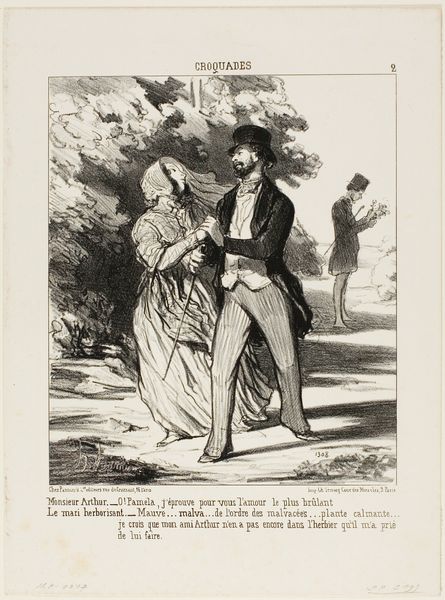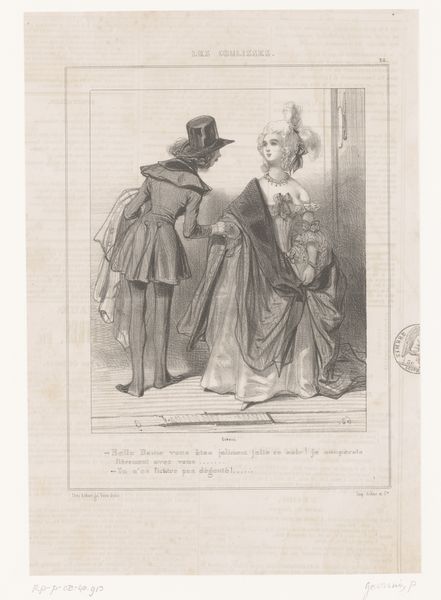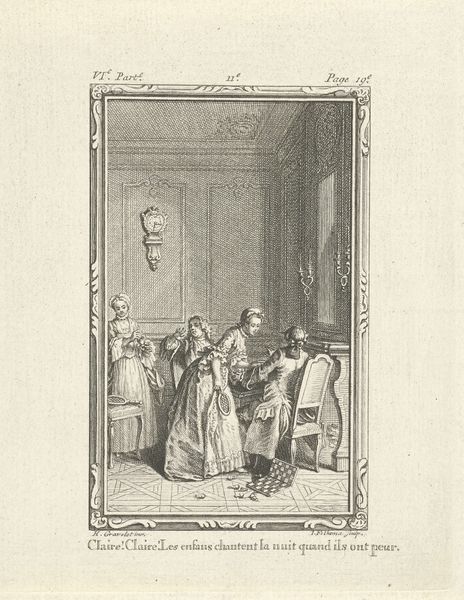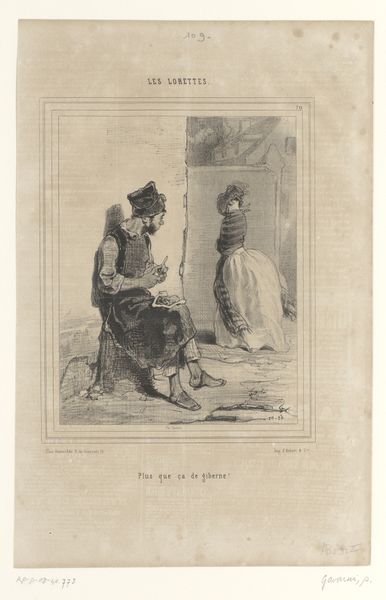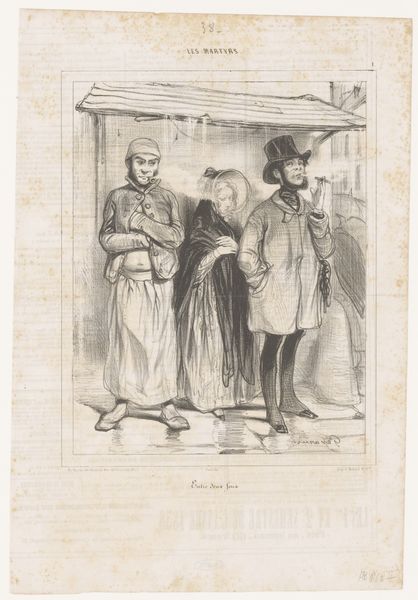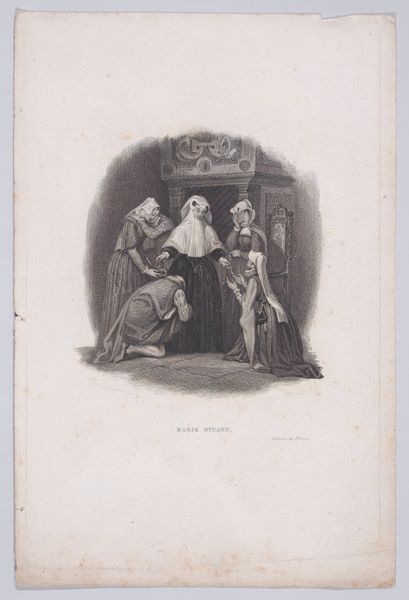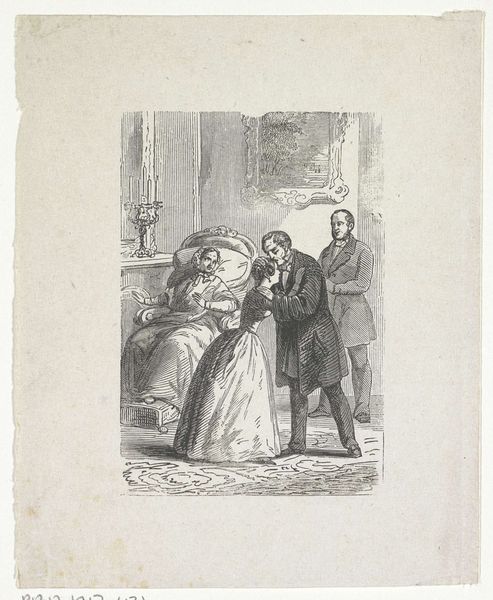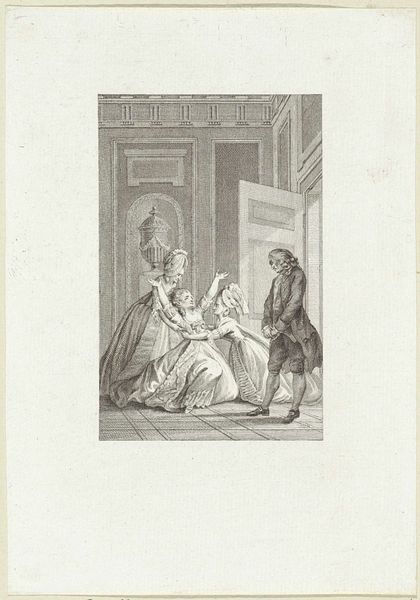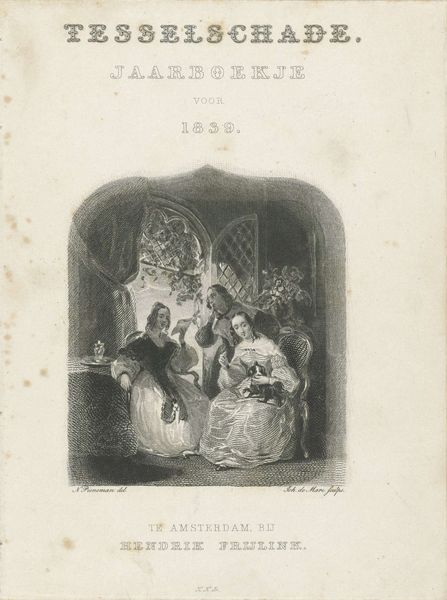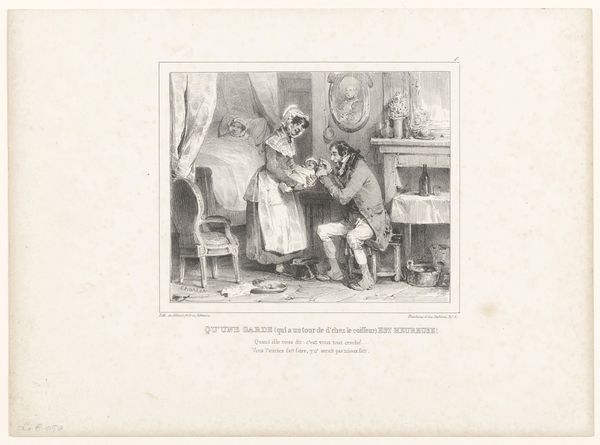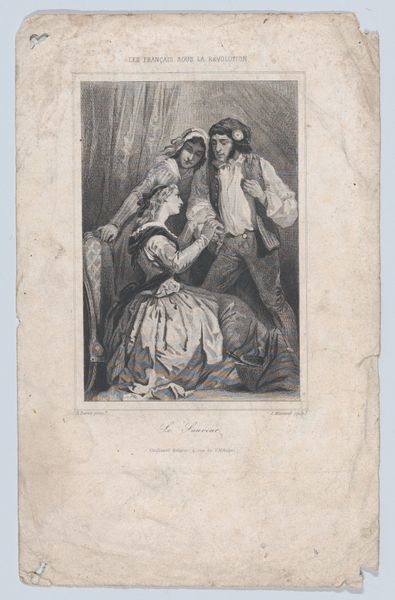
drawing, graphic-art, lithograph, print, paper
#
drawing
#
graphic-art
#
narrative-art
#
lithograph
# print
#
paper
#
genre-painting
Dimensions: 240 × 188 mm (image); 351 × 235 mm (sheet)
Copyright: Public Domain
Curator: I'd like to draw your attention to "The Hydropaths: First Treatment (plate 1)", a lithograph created in 1843 by Charles Jacque. It's part of a larger series titled "Les Malades et les Médecins." Editor: My first impression is of a somewhat grotesque domestic scene. There’s an unsettling contrast between the seemingly simple, repetitive lines used for the figures and the underlying commentary being conveyed, a discomfort underscored by the relatively muted tonal range. Curator: Indeed, it is a critique of the burgeoning trend of hydropathy, or water cure, as a medical treatment. Jacque, through his art, satirizes the public’s fascination and, perhaps, gullibility towards such methods. Note the piles of empty vessels and the patient's weary, resigned posture as he gulps down water, urged on by a self-satisfied doctor and other onlookers. Editor: Yes, there’s a deliberate discordance there, isn’t there? The visual arrangement mimics traditional genre scenes of health and well-being, but the patient looks miserable, his surroundings clinical and slightly absurd, further emphasizing the perceived futility of the "treatment" being administered. Even the chair seems to slouch. Curator: The expressions of the characters surrounding the patient are also crucial. The doctor, with his smug expression, seems more interested in the spectacle and perhaps personal gain than in actual healing. The lithograph served as social commentary, challenging the authority and efficacy of alternative medical practices that were gaining popularity at the time. Editor: Structurally, there's an almost cartoonish quality. The exaggerated features and simplified forms allow Jacque to use a seemingly innocuous image to make a sharper satirical statement about trust and authority, about the relationship between practitioners and patients in a quickly changing world. Curator: And given the popularity of print media, such pieces would have resonated widely. They could shape public discourse in ways that other art forms at the time, more limited by exclusivity, simply could not. Editor: Reflecting on the artwork's formal elements alongside the commentary, I’m struck by how effectively it embodies both skepticism and a sense of unsettling voyeurism around the concept of health and medical care. Curator: Precisely. Jacque's piece highlights the evolving landscape of medicine and society’s anxieties related to health and wellness. It gives us some interesting perspectives, and reminds us that not everything new is inherently progressive.
Comments
No comments
Be the first to comment and join the conversation on the ultimate creative platform.
